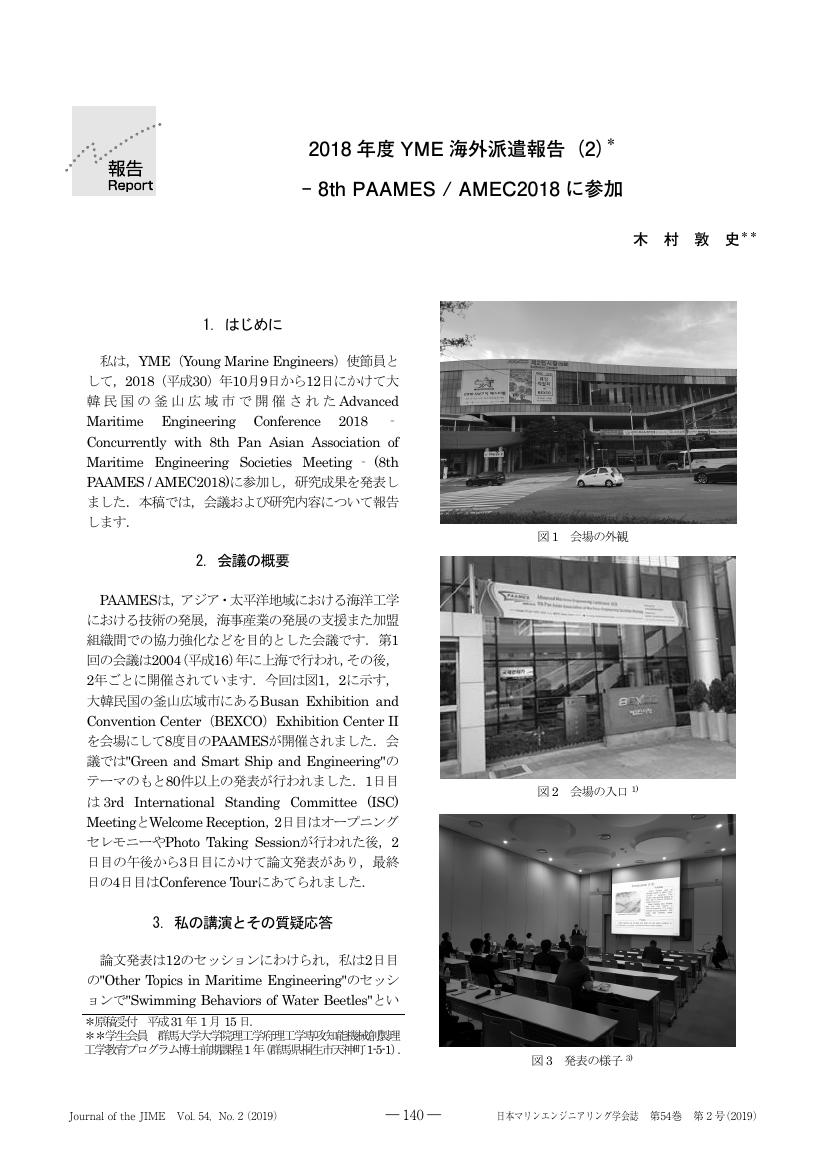1 0 0 0 OA ビタミンAの催奇形性に及ぼすアルカロイドの効果
- 著者
- 増田 游 上田 節夫 西崎 和則 木口 真樹 岡本 宏司 小倉 義郎 永井 廣 鈴木 一憲
- 出版者
- THE JAPAN OTOLOGICAL SOCIETY
- 雑誌
- Ear Research Japan (ISSN:02889781)
- 巻号頁・発行日
- vol.17, no.1, pp.478-481, 1986 (Released:2011-08-11)
- 参考文献数
- 5
Authors showed the inhibitory effect of Cepharanthin, a kind of Alkaloid, on the teratogenicity of maternal hypervitaminosis A in the rat in the previous report. At the present study, besides, the effect to the internal malformations induced by maternal hypervitaminosis A were investigated using the same materials of the previous study. Twenty-four fetuses from 2 mothers treated with excessive vitamin A and 31 from 3 mothers treated with both of excessive vitamin A and Cepharanthin were stained with Inouye's bone and cartilage staining method and the findings of their middle ear region were observed under the light stereoscopic microscope. Difference of middle ear findings between 2 groups suggested that the inhibitory effect of Cepharanthin to the teratogenic activity of excessive vitamin A acts even on the internal malformations of middle ear region by the membrane stabilizing effect of Cepharanthin.
1 0 0 0 IR 暴かれた傑作
- 著者
- 松村 博史
- 出版者
- 京都大学フランス語学フランス文学研究会
- 雑誌
- 仏文研究 : Etudes de Langue et Littérature Françaises (ISSN:03851869)
- 巻号頁・発行日
- no.23, pp.45-63, 1992-09-01
- 著者
- 深田 淳太郎
- 出版者
- 日本文化人類学会
- 雑誌
- 日本文化人類学会研究大会発表要旨集
- 巻号頁・発行日
- vol.2008, pp.119, 2008
パプアニューギニアのトーライ族の人々は税金や授業料の支払に貝貨を使用する。貝貨と法貨の間には交換レートが存在し、日常的に様々な商品がこのレートで売買されている。しかし葬式の際に盛んになされる商品の売買ではこのレートは完全に無視される。このようなケースで通常注目されるのは葬式という場の特殊性だろう。が、本発表では逆にその葬式(=図)を「特殊」に見せる「通常の交換レート」(=地)の「秘密」に迫りたい。
1 0 0 0 IR DNA解析ならびに核型分析によるケープペンギンの多様性と特徴付けに関する研究
The African penguin (Spheniscus demersus), which is endemic to southern Africa, is one of the world's most endangered seabirds. While wild African penguin populations continue to decrease, properly maintained captive populations are steadily increasing each year. To avoid close inbreeding and to maintain genetic diversity, the Japanese Association of Zoos and Aquariums keeps studbooks, which it uses to promote long-term breeding plans. However, genetic data have not been collected on either wild or captive African penguins in Japan to date.This study addresses the genetic characterization of captive African penguins in Japan, and is organized into four chapters. The first and second chapters describe the genetic diversity and phylogenetic relationships among African penguins based on mitochondrial and microsatellite DNA. The third chapter characterizes DNA markers isolated from African penguins. The fourth chapter includes an analysis of the karyotype and nucleolus organizer region of the African penguin. Chapter 1 Mitochondrial DNA analysis of captive African penguins in Japan According to the 2011 Japanese regional studbook for the African penguin, they were first introduced to Japan in 1935, and 156 additional founders were introduced from 1973 to 2011. The captive African penguin populations in Japan comprise 485 individuals belonging to an estimated 87 different founder lineages. In this study, 236 African penguin samples derived from 62 founder lineages were analyzed based on two mitochondrial DNA (mtDNA) regions. 1) Analysis of the control region Multiple sequence alignments of the 433-bp partial control region showed 39 polymorphic sites and a total of 30 distinct haplotypes. Neighbor-joining (NJ) phylogenetic analysis using the sequences revealed that the captive African penguins clustered into two clades (A and B) supported by high bootstrap values. The divergence between African penguin clades A and B (d = 3.39%) observed in the present study may reflect geographical isolation, the existence of undefined subspecies, or both, although it must be noted that our data focused on captive-bred individuals.2) Analysis of the cytochrome b gene The complete 1140-bp sequence of the cytochrome b gene was obtained from 54 captive African penguins in Japan. We detected 8 haplotypes defined by 11 variable sites. NJ phylogenetic analysis using the cytochrome b sequences identified two clades similar to those observed using the control region. These mtDNA analyses suggest that captive African penguins in Japan are derived from two distinct maternal lines.Chapter 2 Genetic population structure of captive African penguins in Japan based on microsatellite DNA analysis Eight microsatellite loci (Sh1Ca12, Sh1Ca16, Sh2Ca21, PNN01, PNN03, PNN06, PNN09, and PNN12) were examined to estimate the genetic variability and relationships among 178 captive African penguins derived from 58 founder lineages. Deviation from Hardy–Weinberg equilibrium and linkage disequilibrium were not observed for any of the markers. Mean HE (expected heterozygosity) and HO (observed heterozygosity) values ranged from 0.45 to 0.72 and from 0.45 to 0.71, respectively. These heterozygosity values for captive African penguins were higher than those of a previously described wild population of yellow-eyed penguins (Megadyptes antipodes). A Bayesian clustering method was used to characterize genetic differentiation among populations, and three subpopulations of captive African penguins were inferred.Chapter 3 Isolation and characterization of novel DNA markers from the African penguin Four methods were used to isolate genetic markers specific to the African penguin.1) Isolation of a satellite DNA fragmentA 190-bp satellite DNA fragment (a type of repetitive DNA) was isolated by digesting African penguin genomic DNA with the resection enzyme BmeT110. PCR analysis with newly designed primers based on the sequence showed that the repetitive DNA sequence was shared among spheniscid species. Southern blot hybridization analysis was performed using the satellite DNA fragment as a probe. Hybridization with genomic DNA from the African penguin, Magellanic penguin, and Humboldt penguin, which all belong to genus Spheniscus, generated ladder signals of tandem repeats, whereas non-tandem repetitive signals were found in genera Pygoscelis and Aptenodytes.2) DNA markers obtained by randomly amplified polymorphic DNA Randomly amplified polymorphic DNA PCR techniques were used to identify a 778-bp band that differentiates the African penguin from the Humboldt penguin in addition to several common bands. Cloning and sequence analysis of the unique band and band-specific PCR analysis showed that the fragment was common to spheniscid species.3) DNA markers obtained by mini/microsatellite-associated sequence amplification analysis Mini/microsatellite-associated sequence amplification (MASA) techniques were used to generate a prominent 540-bp band that differentiates the African penguin from the Humboldt penguin. Cloning and sequence analysis of the unique band, and subsequent band-specific PCR analysis showed that this fragment distinguished genera Aptenodytes and Pygoscelis from genera Spheniscus and Eudyptes.4) Representational difference analysis Three series of representational difference analysis were performed using a combination of African penguin amplicons as testers and Gentoo penguin amplicons as drivers. One informative polymorphic marker, present exclusively in Spheniscus and Eudyptes, was obtained. No polymorphic DNA fragments were isolated when amplicons prepared from the Humboldt penguin were subtracted from those prepared from the African penguin.Chapter 4 Karyotype of the African penguin The African penguin karyotype was analyzed. To obtain metaphases, the direct culture technique was used for peripheral blood lymphocytes. The chromosome number of the diploid African penguin was, for the first time, determined to be 76 (2n = 76), where 7 pairs of autosomes and a pair of sex chromosomes were considered macrochromosomes, and the remaining 30 pairs (60 chromosomes) were microchromosomes. According to several previous studies, the diploid chromosomal numbers of the Magellanic penguin and the Humboldt penguin were 68 and 78, respectively. While the number of macrochromosomes was constant among species of genus Spheniscus, the number of microchromosomes varied. Taken together, we demonstrated the existence of two divergent clades of captive African penguins with moderate genetic distance based on mtDNA sequence analyses. Next, we showed three different subpopulations within the African penguin. The population of captive African penguins in Japan was derived from multiple genetic origins, resulting in genetic diversity. Moreover, we isolated DNA markers shared among family Spheniscidae, but did not detect genetic markers specific to the African penguins. This finding suggests that penguin species in Spheniscus, including the African penguin, have a high level of genetic homogeneity. In addition, the African penguin karyotype was determined for the first time. These molecular analyses should be useful to Japanese zoos and aquariums for future management decisions and the implementation of breeding programs.
1 0 0 0 OA 量子力学における観測問題の現状(修士論文(1991年度))
- 著者
- 小出 功史
- 出版者
- 物性研究刊行会
- 雑誌
- 物性研究 (ISSN:05252997)
- 巻号頁・発行日
- vol.58, no.4, pp.418-442, 1992-07-20
この論文は国立情報学研究所の電子図書館事業により電子化されました。
1 0 0 0 江戸時代の三方楽所楽人と三方及第--「楽所日記」に基づく一考察
- 著者
- 南谷 美保
- 出版者
- 四天王寺国際仏教大学
- 雑誌
- IBU四天王寺国際仏教大学紀要 文学部・短期大学部 (ISSN:02864185)
- 巻号頁・発行日
- no.29, pp.218-239, 1996
1 0 0 0 OA 大学生のしなやかマインドセットの発達(上)
- 著者
- 渡辺 研次
- 出版者
- 大阪経大学会
- 雑誌
- 大阪経大論集 (ISSN:04747909)
- 巻号頁・発行日
- vol.68, no.4, pp.1, 2017 (Released:2018-02-15)
- 著者
- 三野 耕 井関 敏之 中川 敏 羽間 鋭雄 後藤 幸弘 山田 耕司 本間 聖康 脇田 正道
- 出版者
- 一般社団法人 日本体育学会
- 雑誌
- 日本体育学会大会号 第28回(1977) (ISSN:24330183)
- 巻号頁・発行日
- pp.309, 1977-10-12 (Released:2017-08-25)
1 0 0 0 中澤高志著『住まいと仕事の地理学』
- 著者
- 谷 謙二
- 出版者
- 一般社団法人 人文地理学会
- 雑誌
- 人文地理 (ISSN:00187216)
- 巻号頁・発行日
- vol.72, no.1, pp.40-41, 2020 (Released:2020-05-08)
- 著者
- 佐藤 洋行
- 出版者
- 一般社団法人 プロジェクトマネジメント学会
- 雑誌
- プロジェクトマネジメント学会誌 (ISSN:1345031X)
- 巻号頁・発行日
- vol.12, no.4, pp.9-13, 2010
プロジェクトが失敗する要因の一つとして,問題が本番稼働直前で発覚し,その対応が間に合わず大きな事故になってしまうといったことが多々見受けられる.問題の顕在化が遅れることは,問題解決のための時間が少なくなるだけでなく,プロジェクト全体に大きな影響を与えてしまう可能性が高く,問題を早期に検出することはプロジェクト成功のために非常に重要なことだと考える.「なぜもっと早い段階で問題を検出できなかったのか」,プロジェクト完了時の反省として議論することが多いが,いまだ効果的な対処策を見い出せていないと感じる.通常,プロジェクトメンバとの各種会議で進捗状況や懸案の確認を行っているが,担当者の認識の甘さからPM(またはPL)への報告漏れがあったり,またミスが原因の場合などでは叱責を受けることを恐れて無意識に報告がおろそかになるなど,必ずしもPM(またはPL)に正しく状況が伝わらない,といった現状があると考える.そこで,日頃の進捗確認方法に何かしらの問題があるのではないかと考え,より早期に,かつ適確に問題を顕在化するための手段を検討し,実際に試行を行った上でその手段の有効性について検証する.
1 0 0 0 トライアングルの力を100%引き出す為の周波数解析
- 著者
- 増本 雛乃 高橋 朱里 引率責任者 岩川暢澄
- 雑誌
- サイエンスキャッスル2017
- 巻号頁・発行日
- 2017-12-14
1 0 0 0 OA 自動車交通量にみる高速道路機能の時空間的分析-東日本大震災と阪神・淡路大震災の事例比較-
- 著者
- 能島 暢呂 加藤 宏紀
- 出版者
- 公益社団法人 土木学会
- 雑誌
- 土木学会論文集A1(構造・地震工学) (ISSN:21854653)
- 巻号頁・発行日
- vol.69, no.4, pp.I_121-I_133, 2013 (Released:2013-06-19)
- 参考文献数
- 15
- 被引用文献数
- 1 3
東日本大震災により影響を受けた高速道路網の日交通量のデータを入手し,時空間的な変動を可視化するとともに,災害対応オペレーションと関連付けて高速道路機能の分析を行った.地震直後,約2,300kmにわたって通行止めの措置がとられ,緊急交通路指定による交通規制が続いたが,それらの解除とともに交通量は迅速に回復し,約2週間で震災前の水準に戻った.長期的にみるとその後も主要路線で交通量は漸増し,2011年7月~10月の間に1.6~2倍に達した.阪神・淡路大震災で大被害を受けた高速道路網の月平均日交通量のデータについても,同様の観点から時空間的分析を行った.また高速道路網の施設水準と機能水準を表す3種類の指標を算出し,両震災で比較を行った.
- 著者
- 橋本 健二
- 出版者
- 経済理論学会
- 雑誌
- 季刊経済理論 (ISSN:18825184)
- 巻号頁・発行日
- vol.51, no.2, pp.106-108, 2014
- 著者
- Wanling ZHANG Qiang ZHANG Jin-Ming LIN
- 出版者
- The Japan Society for Analytical Chemistry
- 雑誌
- Analytical Sciences (ISSN:09106340)
- 巻号頁・発行日
- vol.37, no.2, pp.249-260, 2021-02-10 (Released:2021-02-10)
- 参考文献数
- 105
- 被引用文献数
- 12
Cell analysis is of great significance for the exploration of human diseases and health. However, there are not many techniques for high-throughput cell analysis in the simulated cell microenvironment. The high designability of the microfluidic chip enables multiple kinds of cells to be co-cultured on the chip, with other functions such as sample preprocessing and cell manipulation. Mass spectrometry (MS) can detect a large number of biomolecules without labelling. Therefore, the application of the microfluidic chip coupled with MS has represented a major branch of cell analysis over the past decades. Here, we concisely introduce various microfluidic devices coupled with MS used for cell analysis. The main functions of microfluidic devices are described first, followed by introductions of different interfaces with different types of MS. Then, their various applications in cell analysis are highlighted, with an emphasis on cell metabolism, drug screening, and signal transduction. Current limitations and prospective trends of microfluidics coupled with MS are discussed at the end.
- 著者
- Rino TAKEUCHI Masato SUZUKI Tomoyuki YASUKAWA
- 出版者
- The Japan Society for Analytical Chemistry
- 雑誌
- Analytical Sciences (ISSN:09106340)
- 巻号頁・発行日
- vol.37, no.2, pp.229-232, 2021-02-10 (Released:2021-02-10)
- 参考文献数
- 25
- 被引用文献数
- 2
The electrorotation (ROT) rates of K562 cells accompanied by erythroid differentiation were estimated to identify the differentiation status by using a novel electrorotation device with a microwell arranged on polynomial electrodes. Successive estimations of individual cells were achieved by sequential manipulations which involve trapping of the cell by positive dielectrophoresis (DEP), rotating by ROT, and removing by negative DEP. The ROT rate increased with the differentiation of K562 cells, because the cytoplasm conductivity would increase with an increase of the concentration of iron ions to produce hemoglobin. The ROT rate could be utilized to estimate the stage of cell differentiation without labeling.
1 0 0 0 OA 通俗小説の偶然性 : 横光利一「純粋小説論」の偶然概念をめぐって
- 著者
- 真銅 正宏 Masahiro Shindo
- 出版者
- 同志社大学人文学会
- 雑誌
- 人文學 = Doshisha University Jinbungaku (Studies in Humanities) (ISSN:04477340)
- 巻号頁・発行日
- no.173, pp.95-110, 2003-03-20
1 0 0 0 OA 「心理學研究」の回顧
- 著者
- 松本 亦太郎
- 出版者
- 公益社団法人 日本心理学会
- 雑誌
- 心理学研究 (ISSN:00215236)
- 巻号頁・発行日
- vol.10, no.5-6, pp.695-700, 1935 (Released:2010-07-16)
- 被引用文献数
- 1 1
- 著者
- 木村 敦史
- 出版者
- 公益社団法人 日本マリンエンジニアリング学会
- 雑誌
- マリンエンジニアリング (ISSN:13461427)
- 巻号頁・発行日
- vol.54, no.2, pp.262-264, 2019-03-01 (Released:2019-03-29)
- 参考文献数
- 5







